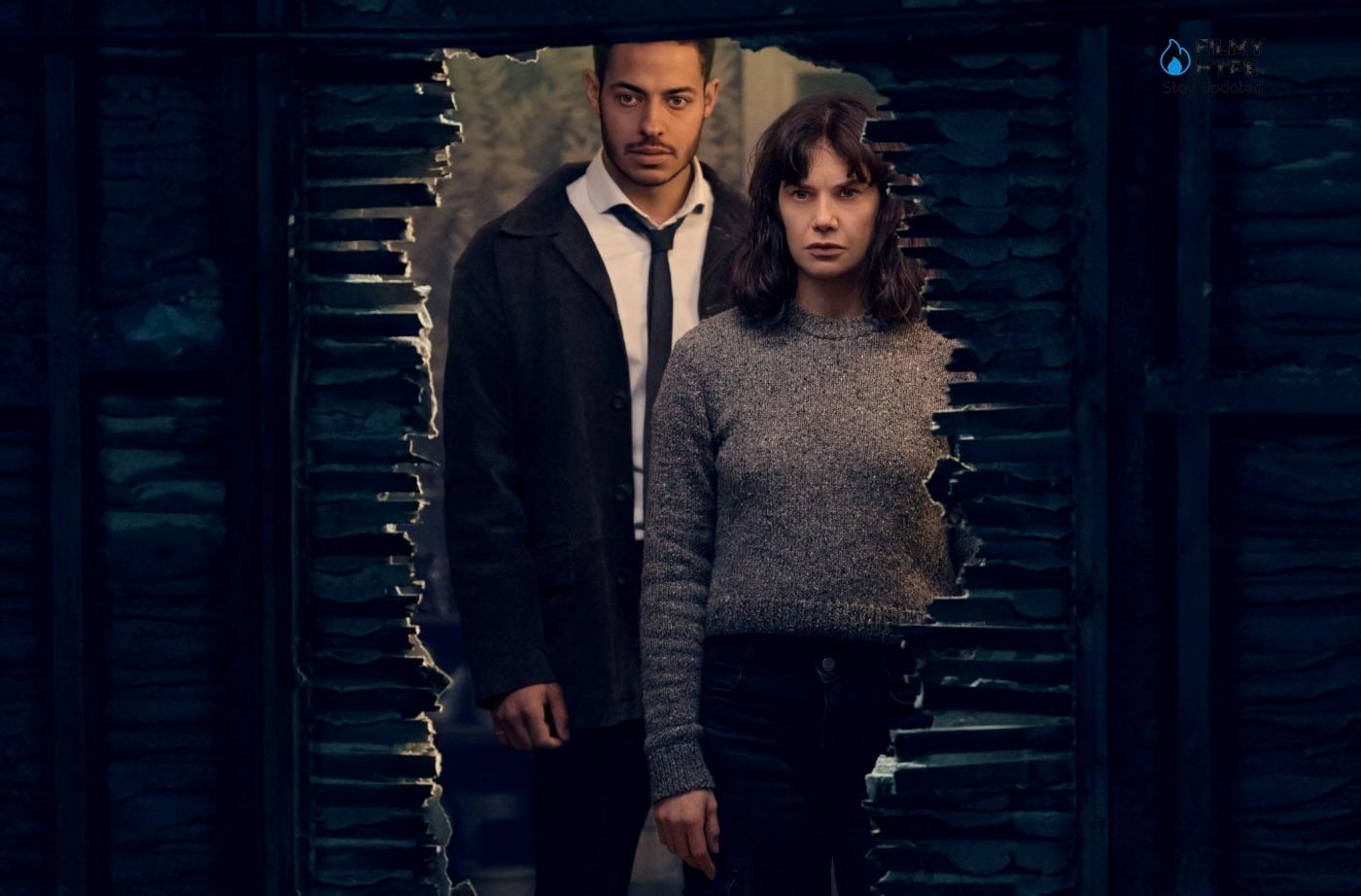The Woman in the Wall: The Disturbing True Story of the Thriller Series?
The Woman in the Wall, which just premiered on Showtime and Paramount+, is not a simple crime thriller, it is a story of trauma, abuse, and real events that are connected to a Church scandal in Ireland. Starring Ruth Wilson (Luther, His Dark Materials, The Affair), the crime and suspense series follows Lorna Brady, a woman with a traumatic past and sleepwalking problems, which lead her to have episodes where she does things without realizing it. and without awareness of what is happening.

Lorna wakes up in the middle of a road, not knowing how or why she got there, and when a local priest is found murdered, she begins to fear that the case may be connected to her, especially when it is revealed that the priest was himself. When she was a teenager and her family discovered that she was pregnant, he took her to a convent where he was supposed to take care of her, but there she ended up suffering abuse from the nuns, who also separated her from her baby and did not allow her to see her again. The murder case also happens at a time when the story of the convent and the abuse are beginning to circulate in the media, and the authorities are seeking to contact all the women who passed through that place, and whose stories were connected to the priest, to determine if they have anything to do with all that. Lorna is caught in the middle and her sleepwalking problem begins to cause more problems than she can handle.
The Plot of The Woman in the Wall
Lorna Brady (Ruth Wilson) works as a seamstress not far from her home in Kilkinure, Northern Ireland. Her work is much appreciated but she Lorna is a very reserved woman: she lives alone in a large house and seems reluctant to form bonds, even though she lives in a town where everyone knows each other. When we first see her, she is lying in the middle of a street, in her nightgown: Lorna is sleepwalking. At home, she has a room in which she seems to pile up all the objects that she ruins or brings home while sleepwalking. Despite her taking precautions by putting several padlocks on all the doors, one morning she wakes up in her bed and in that room, she finds a body.
Meanwhile, a priest, Father Percy, is found dead in Dublin, and Detective Colman Akande (Daryl McCormack, Bad Sister) – who knew the victim – goes to Kilkinure where the priest’s car is found. What happened? Who is the victim at Lorna’s house? Did it have anything to do with the anonymous note Lorna had received the day before, in which someone claimed to know what had happened to her baby? And how are Kilkinure and Lorna related to Father Percy?
Children Stolen By The Church In Ireland: The Case Of The Magdalene Laundries
The case shocked the whole world. In early 2021, Ireland made public the full report of the Government’s commission of inquiry into horror orphanages in Ireland. The case arises from the investigation by the Sunday Independent newspaper. In 1922, after centuries of British colonization, Ireland gained independence, becoming an autonomous Republic. In that year, it was decided to entrust to the Church the structures used as reception institutions for girls who had become pregnant outside of marriage and managed by nuns belonging to various orders. They were officially called Mother and Baby Homes but were commonly called Magdalene Laundries. They existed across the UK as early as the eighteenth century, with the idea of offering girls a safe place to carry their pregnancies to a term, away from the eyes of families and communities who were told lies about the estrangement of expectant mothers.
In reality, the girls were forced to work hard and their children, often torn from their arms, ended up in other facilities where they died prematurely due to lack of care, while those who ran them pocketed large fees from public money. In 2017 in County Galway, authorities found the bodies of nearly 800 buried children related to one of these facilities. The case explodes and a commission of inquiry is established into the abuses and horrors conducted in these facilities in Ireland. Abuses and horrors which, naturally, Irish women had been reporting for some time, without anyone bothering to investigate the facts.
The 2021 report shows how, between 1922 and 1998, the Mother and Babies Homes, institutions, and orphanages financed by the State and managed by the Catholic Church, recorded a very high infant mortality rate, decidedly out of the ordinary. Illness, malnutrition, mistreatment: in these places over 9000 children born out of wedlock died, while their mothers suffered abuse and violence of all kinds, perpetrated over time. Until he lost his life.
Annalisa Lo Monaco, regarding the Irish Maddalena Laundries, writes:
“In the Donnybrook laundry, in the center of Dublin, the bodies of 155 women lie in a mass grave, which in the nuns’ calculations should have been 133: there are 22 more corpses, not to mention that the death certificates are only 75 Women without names and identities, forgotten by everyone, for whom no one has ever shed even a tear, neither for their death, nor even for a life lived in segregation, without having committed any fault.”
If you have not lived on the Moon, you will undoubtedly have heard of the case that led Irish Prime Minister Michéal Martin, elected in 2020, to publicly apologize to his people and the entire world with these words:
I apologize for the generational wrong inflicted on Irish mothers and their children who ended up in Mother and Baby Homes or county institutions. As the commission clearly says, they should not have been there. I apologize for the shame and stigma to which they were subjected and which remains a burden for some today. And with apologies, I want to point out that each of you was in one of these institutions through someone else’s fault, each of you is blameless, each of you did nothing wrong and has nothing to be ashamed of.
The story of The Woman in The Wall is set against the backdrop of this atrocious affair, which according to the report involved over 56,000 women.
Lorna and a Mother’s Pain
The story of the TV series with Ruth Wilson, who also acts as executive producer, is built entirely around the case of the “laundries”, as they call them in Kilkinure, where a convent hid one of these horror structures. In the town, everyone knows that Lorna is one of the mothers of the nearby laundry. The women who had been taken to that place reunite but having lost hope of finding their children and obtaining justice, these are mostly meetings in which the anger of the survivors emerges.
Lorna is alone. She suffers from sleepwalking. She suffered abuse and lost her baby, who was ripped from her arms soon after she came into the world. The reason why the authors of the series created by Joe Murtagh (Origin) for the BBC inform us of Lorna’s past almost immediately is twofold. On the one hand, we are pushed to sympathize with Lorna, a victim of horrible abuse and unjustly deprived of her little girl. On the other hand, the series wants to represent, through the character of Lorna, the drama of all those women, tens of thousands, perhaps already, who have suffered the same fate as her and who struggle every day to survive the pain.
Some wounds never heal and losing a child is certainly one of them. Thanks to the story of Lorna, who was involved in a mysterious crime, The Woman in the Wall tears the veil on a much more widespread reality than previously thought former single mothers in institutions trying to start a new life, some without ever succeeding. The investigative case followed by Detective Sergeant Akande is linked to a dark past, which for a very long time was hidden, denied, and not believed. But today we know is a horrendous reality.
The Woman in the Wall: The Disturbing True Story of the Thriller Series?
In addition to opening with not one, but two complicated murder cases, The Woman in the Wall brings to the table the true story of the abuse committed against teenagers within several convents in Ireland. The series tells about the Magdalene Laundries, where rebellious teenagers were sent, and the Mother and Baby Homes, to which pregnant teenagers (or women who were not married) were sent to avoid a scandal. Over time, the women who were sent there began to talk about it, sharing testimonies where they said that they performed forced labor and suffered substitution or even torture by the nuns who had to take care of them.
According to the History Channel, women who were sent to laundries were treated like slaves, since they worked washing, sewing, ironing, cooking, and performing different tasks without payment and without time to rest, in addition to receiving physical punishment (such as hitting, shouting or prohibiting food) if they did not do their job well. Women of all types were sent there, from rebellious teenagers to women with complicated lives, with histories of prostitution, women who suffered some type of sexual abuse, who were very attractive, or even orphaned girls.
“In 1993 a scandal broke when a mass grave of 155 women was exhumed on the property of a convent in Dublin that had once housed a laundry,” says Britannica.
On the other hand, the Mother and Baby Homes, which date back to the 1920s, received women who became pregnant out of wedlock. Their families sent them to these places to avoid scandals, but, according to the BBC, many babies died in that place and were buried in secret, while others were given up for adoption without the knowledge or consent of the mothers. In 2015, Ireland even created a commission to investigate these houses and the stories of abuse and living conditions of the women who were sent there, and in March 2017 human remains were found buried in one of the houses in the Taum region where, according to the BBC, the remains of premature babies and children up to 3 years old were included. In 2019, a report was filed stating that more than 800 children died in that home alone during its 36 years of operation.
The Showtime series shows a bit of the struggle of some of the victims, their search to be recognized and to bring the truth to light, while others were also trying to reunite with their children, which is something that can also be seen in the film Philomena, with Judi Dench or in Small Things Like These, Cillian Murphy’s film that will be released in 2024. According to Britannica, some homes continued to operate into the 1990s and it is said that, at their peak, 1 in every 100 people in Ireland were confined in one of these institutions.


